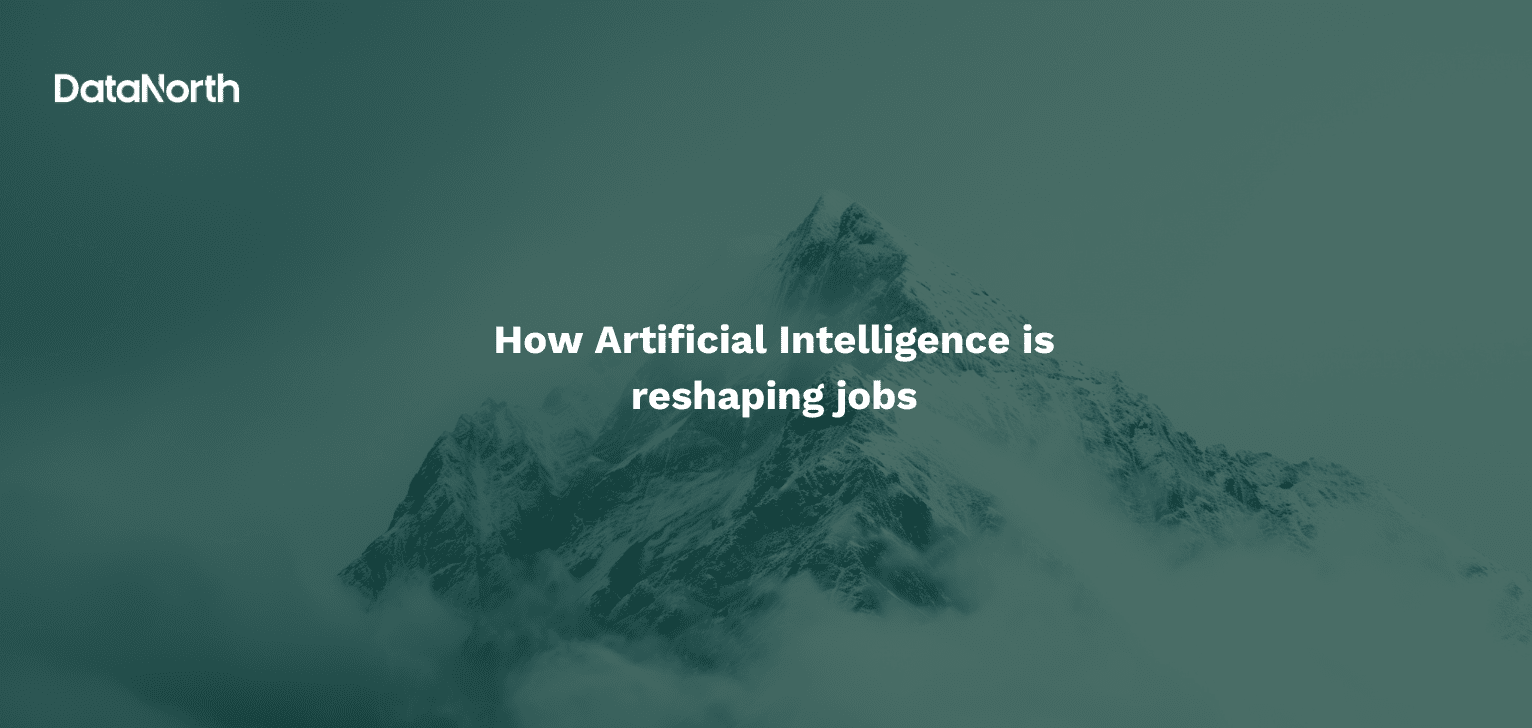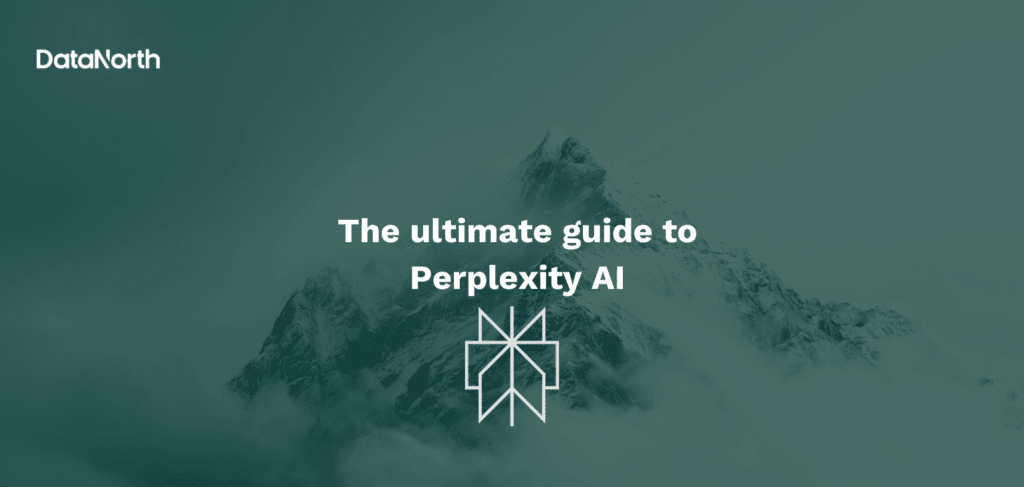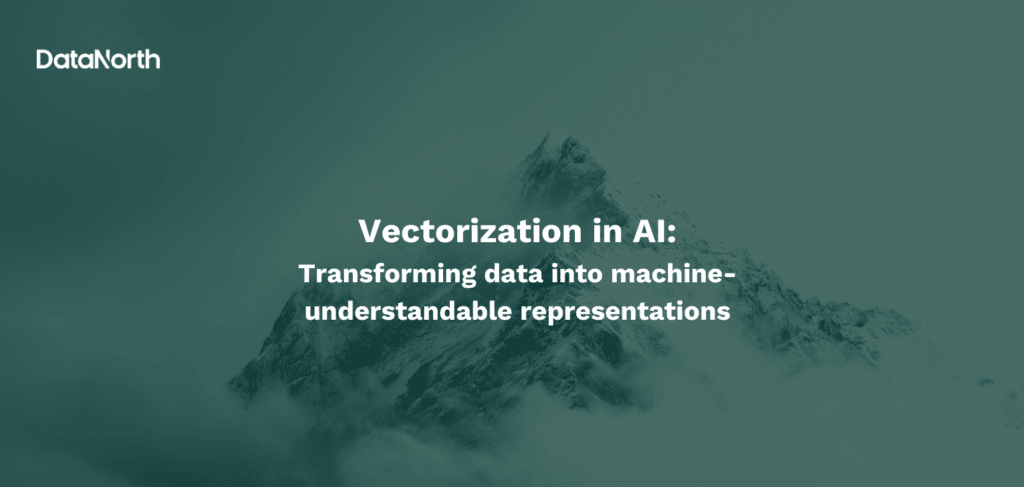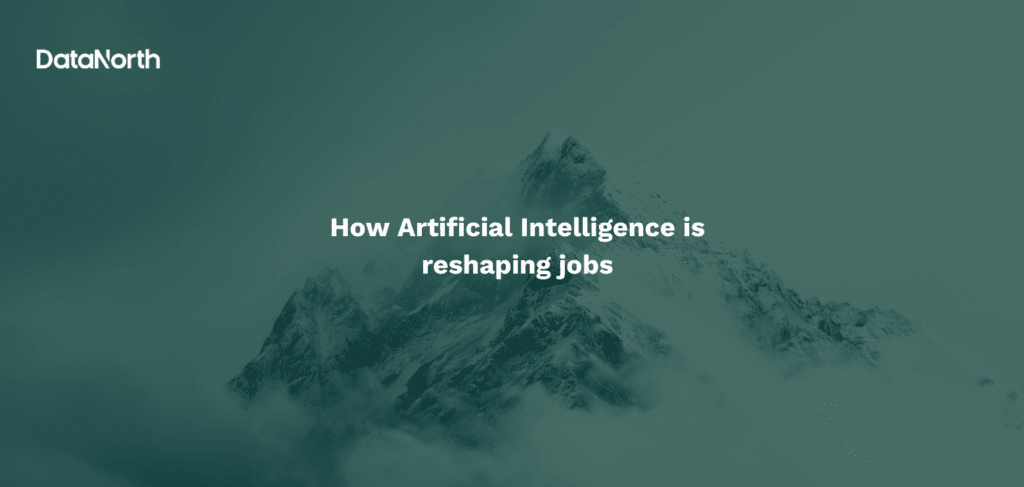The job market is undergoing a fundamental shift. Starter vacancies have declined by 29 percentage points since January 2024, with junior tech roles dropped by 35% and financial services falling 24 percentage points. The World Economic Forum projects that by 2030, only one-third of work tasks will be performed by humans, with 22% of current jobs changing significantly.
Yet this transformation creates opportunities alongside disruption. While 170 million new jobs will emerge by 2030, 92 million will disappear, creating net growth of 78 million positions.
Which jobs face the highest AI automation risk?
Administrative and data processing roles
Positions centered on routine tasks face immediate impact. Bookkeepers, administrative assistants, data entry specialists and payroll processors see increasing automation as AI processes information faster with fewer errors. Credit analysts, investment analysts and accounting clerks find AI performing routine financial tasks with greater speed and accuracy.
Language and content creation positions
Microsoft identified interpreters and translators as having the highest AI replacement risk, followed by historians and passenger assistants. Copywriters saw 30% fewer assignments after ChatGPT, while graphic designers experienced 17% decline after DALL-E and Midjourney. Customer service representatives face disruption as conversational AI handles routine inquiries without human intervention.
Entry-level positions hit hardest: Stanford research found a 13% employment decline for workers aged 22-25 in AI-exposed occupations, disrupting traditional career pathways.
Important distinction: Research shows AI replaces tasks, not necessarily complete roles. Even in affected occupations, humans remain essential for oversight, complex decisions and contextual understanding.
How to adapt and remain valuable in the AI era
Build AI literacy
Currently, 42% of workers recognize needing AI skills, yet only 15% received AI training. This gap represents opportunity. 33% of workers already use generative AI weekly, showing mainstream adoption. AI literacy doesn’t require becoming a data scientist. It means using AI tools effectively, recognizing limitations, and integrating them into workflows as collaborative partners.
Develop human capabilities AI cannot replicate
The top three workplace skills have remained stable: problem-solving, planning and organization, and interpersonal skills.
Focus on:
- Emotional intelligence and empathy
- Critical thinking and contextual judgment
- Genuine creative innovation breaking established patterns
- Complex communication, negotiation and persuasion
Commit to continuous learning: The World Economic Forum estimates 59 out of 100 workers will require training by 2030, with 39% of current skills becoming outdated between 2025 and 2030. 48% of workers are open to career changes with employer training support.
Position yourself in growing sectors: Green skills face 22% demand growth while supply increased only 12%. AI-related roles, healthcare combining technology with care, and sustainability sectors offer strong prospects.
Which jobs will resist AI automation?
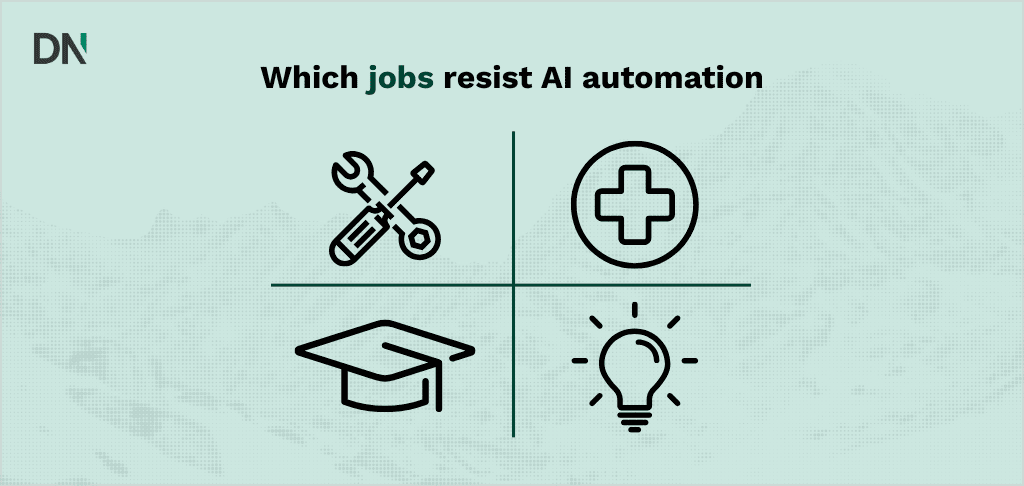
Physical and technical craftsmanship: Plumbers, electricians, masons and plasterers face low automation risk. Their work requires fine motor skills, spatial reasoning and solving novel problems in varied physical environments.
Healthcare and human services: Nurses, caregivers, therapists and medical practitioners provide services where empathy, physical presence and human judgment are essential. Psychologists and mental health professionals work where the therapeutic relationship itself drives outcomes.
Education and personal development: Educators remain AI-resistant because effective teaching requires reading engagement, adjusting approaches in real-time and building relationships supporting learning. Coaches, mentors and social workers rely on understanding individual context and building trust.
Creative and strategic leadership: Original creative conceptualization establishing new paradigms requires human insight. Strategic advisors navigating organizational politics and guiding transformation rely on emotional intelligence and relationship-building AI cannot duplicate.
AI-related positions: AI developers, machine learning engineers, AI ethics specialists and compliance officers are in high demand. Cybersecurity specialists and data scientists remain essential as AI adoption accelerates.
New career opportunities emerging from AI
The 170 million new jobs by 2030 include:
AI-specific roles: AI trainers, prompt engineers, AI ethics officers, compliance managers, conversational AI designers, and AI auditors.
Green economy positions: Renewable energy engineers, sustainability technology specialists, circular economy specialists and climate adaptation experts.
Technology roles: FinTech engineers, cybersecurity architects and human-AI collaboration specialists.
Cross-functional positions: Data ethicists, digital transformation managers and employee experience designers.
Global AI adoption patterns
Worldwide trends
Globally, 78% of organizations use AI in at least one business function, up from 55% one year earlier. The global AI market valued at $391 billion is projected to expand at 35.9% annually through 2030.
Skills gaps
While 84% of international employees receive organizational AI learning support, just over half of US employees receive similar support. In Asia-Pacific, employers are willing to pay IT staff with AI skills 44% more on average.
What organizations must do
Conduct AI impact assessments: Analyze which roles, tasks and functions will be affected. Identify which tasks can be automated, augmented, or require human judgment. Understanding impact at task level enables role redesign rather than position elimination.
Invest in continuous upskilling: Move beyond one-time training to continuous learning programs. Address both technical AI skills and human capabilities like critical thinking, emotional intelligence and creative problem-solving.
Redesign work for human-AI collaboration: Research shows that human-AI collaboration can achieve synergy in creation tasks and when humans outperform AI, though on average, using the best-performing system (human or AI alone) may yield better results than combination
Establish ethical frameworks: Organizations need clear policies addressing privacy, bias, transparency and accountability. In regulated regions, compliance with frameworks like the EU AI Act is essential.
Communicate transparently: Workers need honest communication about changes, opportunities, support for reskilling and how implementation decisions are made.
Building a human-centered AI future
The evidence is clear: AI is transforming work now, not in some distant future. Yet this transformation can benefit both organizations and workers when approached strategically.
For workers: Develop AI literacy, invest in distinctly human skills, commit to continuous learning and position yourself in growing sectors. The gap between 42% recognizing the need for AI skills and only 15% receiving training represents opportunity.
For organizations: Conduct impact assessments, invest in workforce development, redesign work for collaboration, establish ethical frameworks and communicate transparently. Organizations using AI to augment rather than simply replace achieve better outcomes. The 170 million new jobs by 2030 despite 92 million being displaced demonstrates AI can be a net job creator when societies invest in transition support and skill development.
The future of work will be determined not by technology alone, but by how we choose to deploy these capabilities. Workers and organizations who develop AI literacy, strengthen human skills and create effective human-AI collaboration will thrive in the emerging economy.


